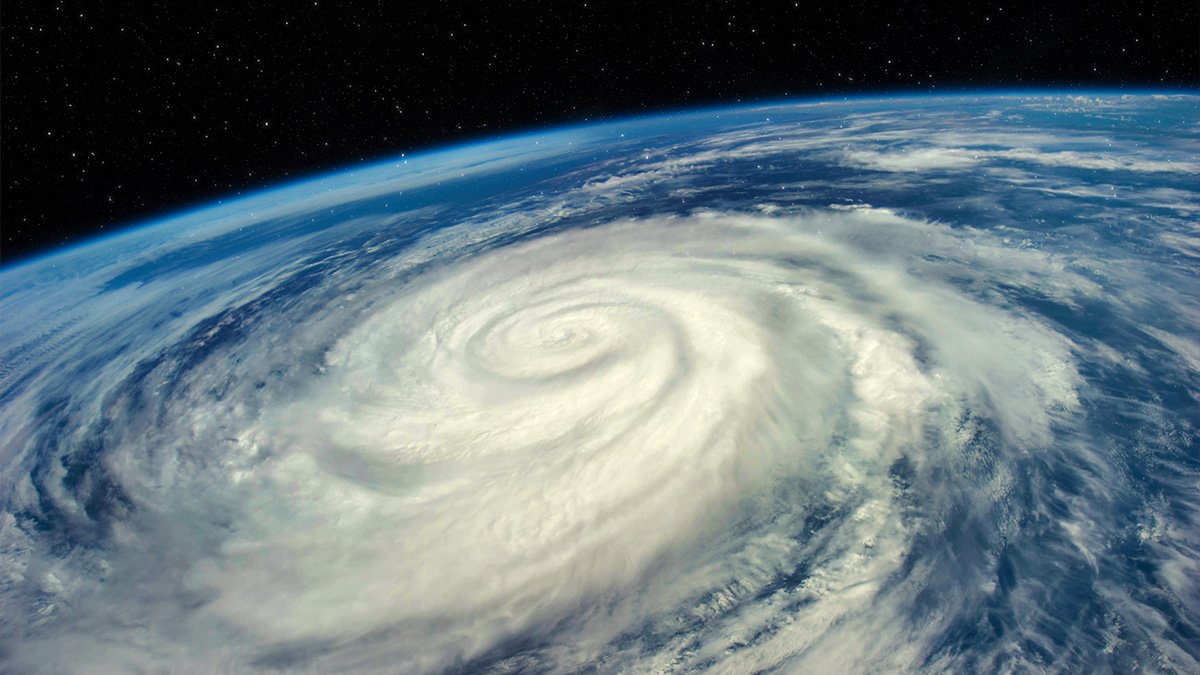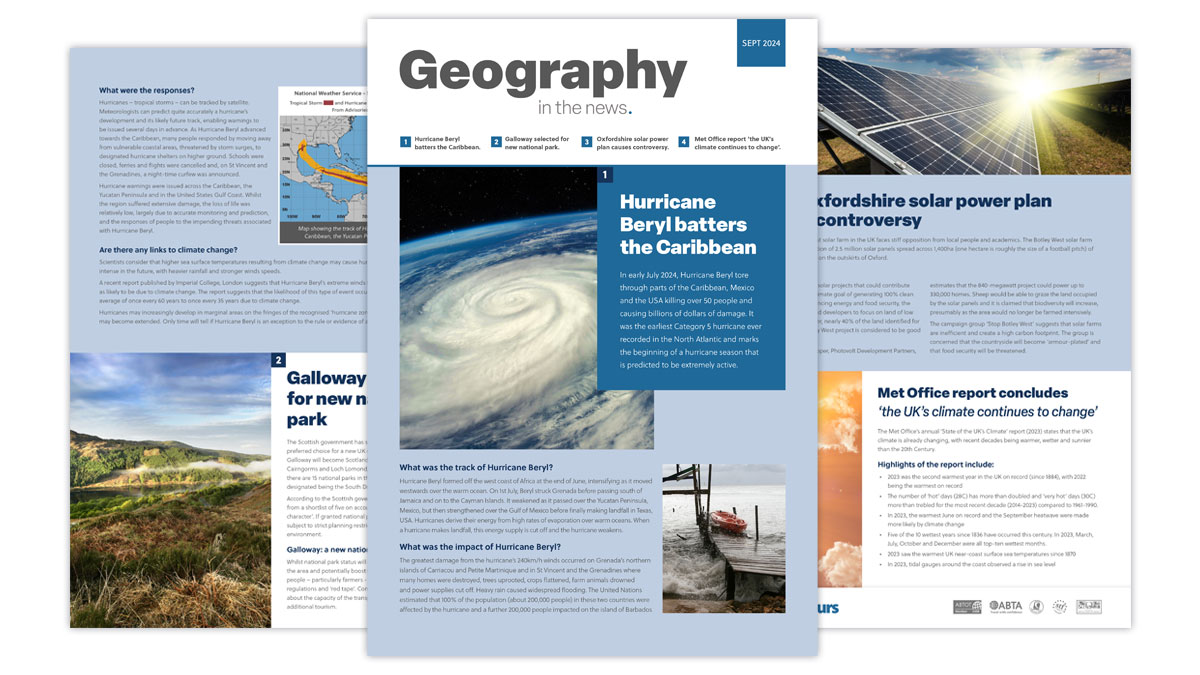
Hurricane Beryl batters the Caribbean
In early July 2024, Hurricane Beryl tore through parts of the Caribbean, Mexico and the USA killing over 50 people and causing billions of dollars of damage. It was the earliest Category 5 hurricane ever recorded in the North Atlantic and marks the beginning of a hurricane season that is predicted to be extremely active.
What was the track of Hurricane Beryl?
Hurricane Beryl formed off the west coast of Africa at the end of June, intensifying as it moved westwards over the warm ocean. On 1st July, Beryl struck Grenada before passing south of Jamaica and on to the Cayman Islands. It weakened as it passed over the Yucatan Peninsula, Mexico, but then strengthened over the Gulf of Mexico before finally making landfall in Texas, USA. Hurricanes derive their energy from high rates of evaporation over warm oceans. When a hurricane makes landfall, this energy supply is cut off and the hurricane weakens.
What was the impact of Hurricane Beryl?
The greatest damage from the hurricane’s 240km/h winds occurred on Grenada’s northern islands of Carriacou and Petite Martinique and in St Vincent and the Grenadines where many homes were destroyed, trees uprooted, crops flattened, farm animals drowned and power supplies cut off. Heavy rain caused widespread flooding. The United Nations estimated that 100% of the population (about 200,000 people) in these two countries were affected by the hurricane and a further 200,000 people impacted on the island of Barbados (photo below).








